About Ethiopia
ETHIOPIA – 3000 YEAR OLD CULTURE
Ethiopia is an ancient country located in North-east, Africa, or as it is generally known, the Horn of Africa, so called because of the Horn- shaped tip of the continent that marks off the Red Sea from the Indian Ocean. It is bounded by Sudan in the West, Eritrea in the north and North-east, Kenya in the south, Somalia in the south- east and Djibouti in the east. To the outside world, it has long been known by the name of Abyssinia, this application apparently derived from ‘ Habeshat’, one of the tripes that inhabited the Ethiopian region in the pre Christians era,
History
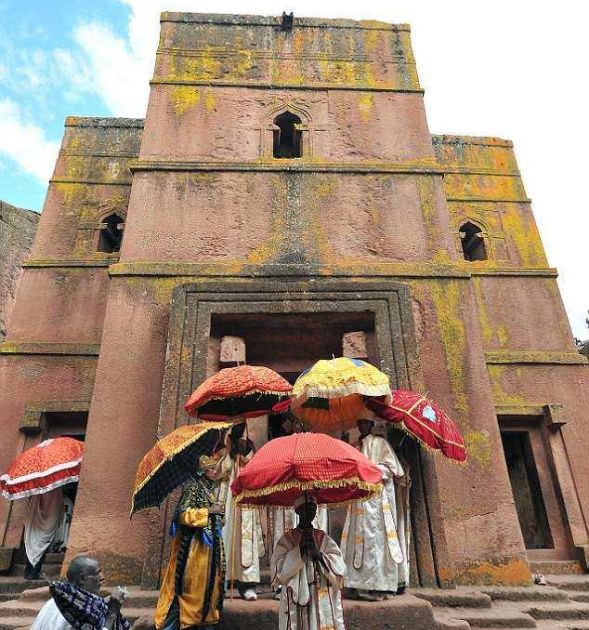 The term Ethiopia is of Greek origin, and in classical times was used as a generic and rather diffuse designation for the African land- mass to the south of Egypt.the first known specific application of the term to the Ethiopian region is found in the Greek version of a trilingual inscription of the time of Esana, the Aksumite king who introduced Christianity into Ethiopia towards the middle of fourth century AD. This adoption of the term continued with the subsequent translation of the Bible in to Ge’ez the old literary language. The Kebra Nagest ( glory of kings) written in the early fourteenth century, which gave the received account of the story of the Queen of Sheba and king Solomon, not only linked the Ethiopian king to the House of Israel, but also sealed the identification of the term Ethiopia with the country,
The term Ethiopia is of Greek origin, and in classical times was used as a generic and rather diffuse designation for the African land- mass to the south of Egypt.the first known specific application of the term to the Ethiopian region is found in the Greek version of a trilingual inscription of the time of Esana, the Aksumite king who introduced Christianity into Ethiopia towards the middle of fourth century AD. This adoption of the term continued with the subsequent translation of the Bible in to Ge’ez the old literary language. The Kebra Nagest ( glory of kings) written in the early fourteenth century, which gave the received account of the story of the Queen of Sheba and king Solomon, not only linked the Ethiopian king to the House of Israel, but also sealed the identification of the term Ethiopia with the country,
Since the thirteenth century, when a dynasty that claimed to represent the restoration of the Solomon line came to rule the country, it’s rulers have styled themselves ‘ king of king of Ethiopia. While it is not uncommon for Ethiopians to refer to them selves, particularly in informal circumstances, as Habasha ( Abyssinians).
Officially they prefer to be called Ethiopians.
Geography
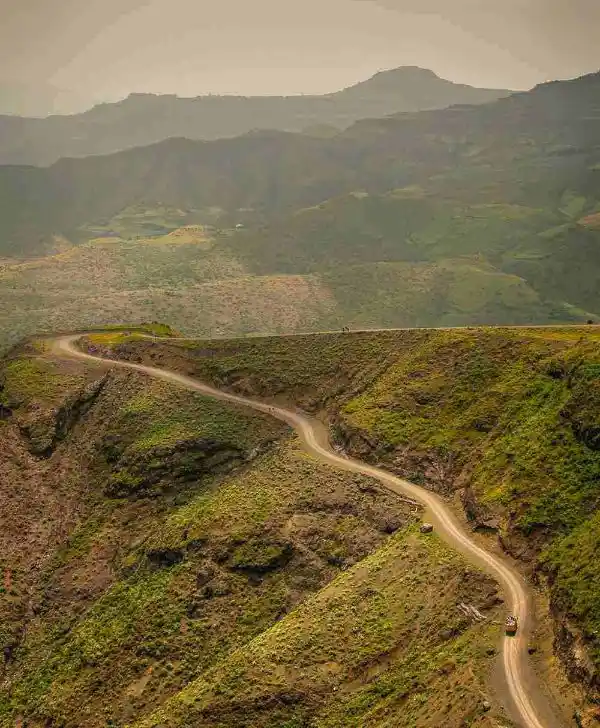 Present-day Ethiopia is located between longitude 33 digr and 48 E, and latitudes 3 digr and N . Although thus lying very near the Equator, the country on the whole is far from tropical’ in the accepted sense of the term. On the contrary, the elevated nature of its highland, rising to over 1,500 metres, gives it a decidedly cooler climate than its geographical location seem to suggest. The highlands are criss-crossed by numerous river valleys, and on an even grander scale, divided by the Rift valley. The valley is part of the great geological faulty that cuts across large parts of eastern Africa. Including Kenya and Tanzania. It diagonally slashes Ethiopia into two unequal parts. The biggest part contains the mountain North, where the country’s highest peaks Ras Dejen (4543 metres) is located and the gentler plateau of the south-western highlands. The smaller part includes the south-eastern highlands of Bale,Harar,Arsi and sidamo, and tapers down to the lowlands inhabited by Oromo ( formerly known as the Galla) and the somali. With the exception of the south- western tip of the country, the highlands are surrounded by an almost uninterrupted ring of lowland. A steep escarpment abruptly descends from the northern highlands to the Red Sea plains, elsewhere, the descent highland to lowland is relatively more gentle!!
Present-day Ethiopia is located between longitude 33 digr and 48 E, and latitudes 3 digr and N . Although thus lying very near the Equator, the country on the whole is far from tropical’ in the accepted sense of the term. On the contrary, the elevated nature of its highland, rising to over 1,500 metres, gives it a decidedly cooler climate than its geographical location seem to suggest. The highlands are criss-crossed by numerous river valleys, and on an even grander scale, divided by the Rift valley. The valley is part of the great geological faulty that cuts across large parts of eastern Africa. Including Kenya and Tanzania. It diagonally slashes Ethiopia into two unequal parts. The biggest part contains the mountain North, where the country’s highest peaks Ras Dejen (4543 metres) is located and the gentler plateau of the south-western highlands. The smaller part includes the south-eastern highlands of Bale,Harar,Arsi and sidamo, and tapers down to the lowlands inhabited by Oromo ( formerly known as the Galla) and the somali. With the exception of the south- western tip of the country, the highlands are surrounded by an almost uninterrupted ring of lowland. A steep escarpment abruptly descends from the northern highlands to the Red Sea plains, elsewhere, the descent highland to lowland is relatively more gentle!!
Climate
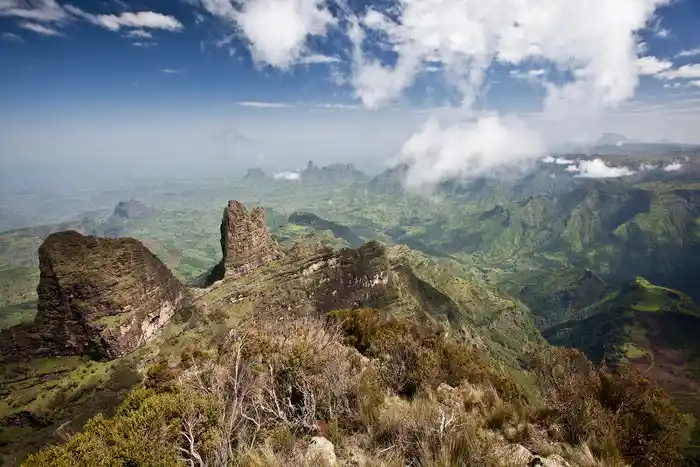 Ethiopia’s generally high altitude offsets the effects of its position in the tropics, just to the north of equator. Temperatures are cool at night and the main rains are usually very heavy in the lowland fringes the climate can be uncertain. The main rain begins at the end of June in addis abeba, slightly later in tigray, and peter out during September. There is often short rain (belg) about ester when another planting is also possible. The southern part of the country is influenced by the monsoons blowing from the Indian Ocean. Temperature varies with altitude. In Ethiopia there are three zones a cool zone (Dega) in the highest mountains; the temperate (woyna dega) zone and the kola zone in desert and at the bottom of big river gorges.
Ethiopia’s generally high altitude offsets the effects of its position in the tropics, just to the north of equator. Temperatures are cool at night and the main rains are usually very heavy in the lowland fringes the climate can be uncertain. The main rain begins at the end of June in addis abeba, slightly later in tigray, and peter out during September. There is often short rain (belg) about ester when another planting is also possible. The southern part of the country is influenced by the monsoons blowing from the Indian Ocean. Temperature varies with altitude. In Ethiopia there are three zones a cool zone (Dega) in the highest mountains; the temperate (woyna dega) zone and the kola zone in desert and at the bottom of big river gorges.
Language
 Amharic is the official language of the Federal Government. English is the medium of instruction at secondary schools, Universities and Colleges and is widely used in business transaction. Oromiffa, Tigrigna, Somali, Guragigna, Sidama, Afar are also widely spoken. A huge percentage of the languages spoken in the country belong to the Afroasiatic family which comprises of Cushitic and Semitic languages. Initially, Amharic was the medium of instructions in primary schools, but that changed in many regions within the country and has so far been replaced by other local languages such as Tigrinya and Oromo.
Amharic is the official language of the Federal Government. English is the medium of instruction at secondary schools, Universities and Colleges and is widely used in business transaction. Oromiffa, Tigrigna, Somali, Guragigna, Sidama, Afar are also widely spoken. A huge percentage of the languages spoken in the country belong to the Afroasiatic family which comprises of Cushitic and Semitic languages. Initially, Amharic was the medium of instructions in primary schools, but that changed in many regions within the country and has so far been replaced by other local languages such as Tigrinya and Oromo.
Agriculture
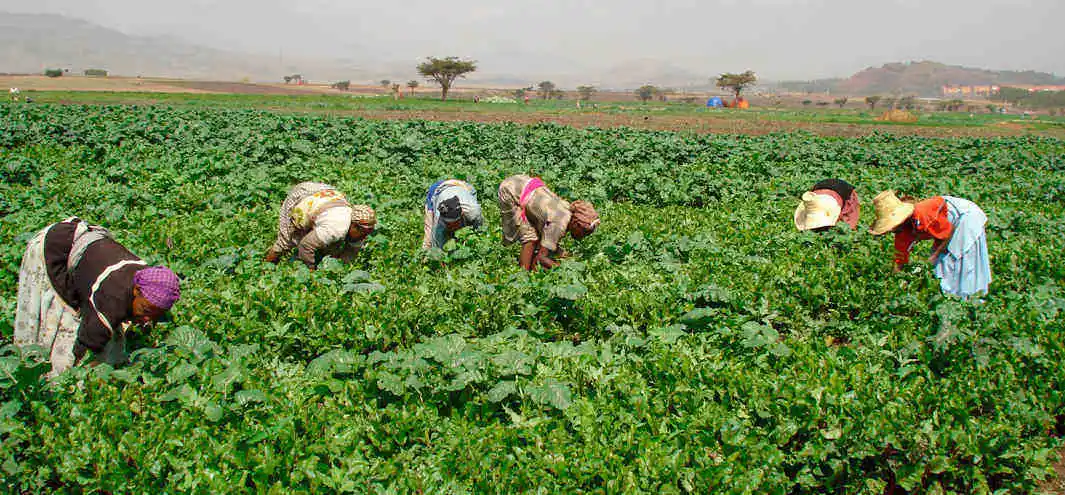 Economy Agriculture is the backbone of the national economy. The sector accounts for over 50% of the country’s GDP and 85% of the labor force. The principal exports from this sector are coffee, oilseeds, pulses, flowers, vegetables and sugar. There is also a thriving livestock sector, as Ethiopia has the largest number of livestock in Africa.
Economy Agriculture is the backbone of the national economy. The sector accounts for over 50% of the country’s GDP and 85% of the labor force. The principal exports from this sector are coffee, oilseeds, pulses, flowers, vegetables and sugar. There is also a thriving livestock sector, as Ethiopia has the largest number of livestock in Africa.
Population
 Ethiopia is considered to be a mosaic of cultural diversity. ‘The population of Ethiopia is estimated to be about 110 million. It is the home of more than 80 ethnic groups. Based on the language they speak, they can be divided into Semitic, Hamitic, Nilotic and Omotic origin. Despite their diversity, Ethiopians are characterized as peaceful and hospitable, and united in their struggle to develop the country. Ethiopians, often called ‘Habesha,’ have a common name for their visitors “Ferenji” which is not meant in disrespect, but in a friendly and sociable manner. Ethiopians are proud of their culture and civilization, which pre-date those of Europe.
Ethiopia is considered to be a mosaic of cultural diversity. ‘The population of Ethiopia is estimated to be about 110 million. It is the home of more than 80 ethnic groups. Based on the language they speak, they can be divided into Semitic, Hamitic, Nilotic and Omotic origin. Despite their diversity, Ethiopians are characterized as peaceful and hospitable, and united in their struggle to develop the country. Ethiopians, often called ‘Habesha,’ have a common name for their visitors “Ferenji” which is not meant in disrespect, but in a friendly and sociable manner. Ethiopians are proud of their culture and civilization, which pre-date those of Europe.
Food & Drink
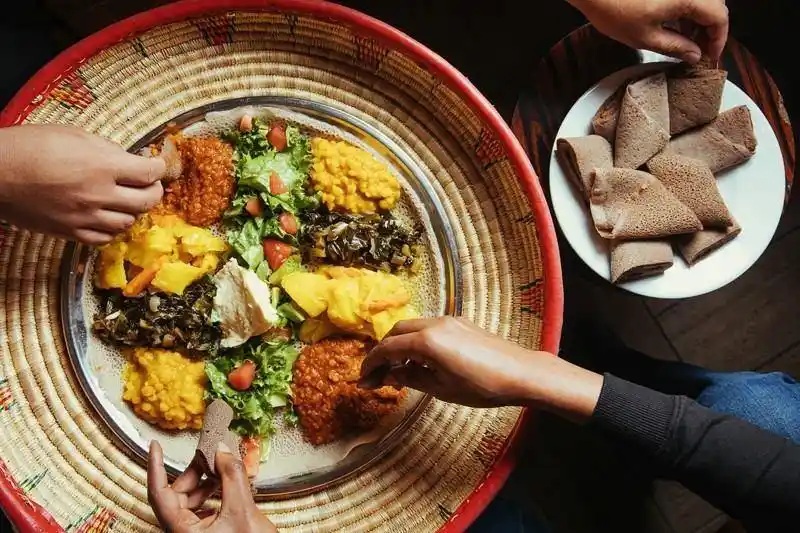 A wide variety of different dishes are available in Ethiopia and most of them are unique to the country so you have to familiarize yourself first with the names of different dishes. You can choose from the spicy and hot Doro Wot, Kitfo, or Key Wot to less spicy dishes like Alicha Wot. You can get these foods virtually anywhere in the country and portions are generous and very inexpensive. There are also home made and fabricated local drinks for you to choose from Araki- a strong alcoholic beverage made from millet and maize, Tej – a mead like drink made from honey and Tela – locally brewed beer from maize, wheat and barely and Guder- the Ethiopian wine.
A wide variety of different dishes are available in Ethiopia and most of them are unique to the country so you have to familiarize yourself first with the names of different dishes. You can choose from the spicy and hot Doro Wot, Kitfo, or Key Wot to less spicy dishes like Alicha Wot. You can get these foods virtually anywhere in the country and portions are generous and very inexpensive. There are also home made and fabricated local drinks for you to choose from Araki- a strong alcoholic beverage made from millet and maize, Tej – a mead like drink made from honey and Tela – locally brewed beer from maize, wheat and barely and Guder- the Ethiopian wine.
Coffee Facts
 Ethiopia is considered to be the birthplace of the coffee plant and of coffee culture. It is thought that coffee was discovered in Ethiopia as long ago as the ninth century. Today, over 12 million people in Ethiopia are involved in the cultivation and picking of coffee, and coffee remains a central part of Ethiopian culture. Ethiopian coffee is considered to be some of the best coffee in the world thanks to its high altitude growing conditions. Coffee is an experience in Ethiopia that is shared with family and friends through daily coffee ceremonies. Coffee drinking is cherished as a special and important time to gather and can last up to several hours. Coffee is important to Ethiopia’s economy; around 60% of foreign income is generated from coffee, and an estimated 15 million of the population rely on some aspect of coffee production for their livelihood and it is also exported to different parts of the world.
Ethiopia is considered to be the birthplace of the coffee plant and of coffee culture. It is thought that coffee was discovered in Ethiopia as long ago as the ninth century. Today, over 12 million people in Ethiopia are involved in the cultivation and picking of coffee, and coffee remains a central part of Ethiopian culture. Ethiopian coffee is considered to be some of the best coffee in the world thanks to its high altitude growing conditions. Coffee is an experience in Ethiopia that is shared with family and friends through daily coffee ceremonies. Coffee drinking is cherished as a special and important time to gather and can last up to several hours. Coffee is important to Ethiopia’s economy; around 60% of foreign income is generated from coffee, and an estimated 15 million of the population rely on some aspect of coffee production for their livelihood and it is also exported to different parts of the world.
